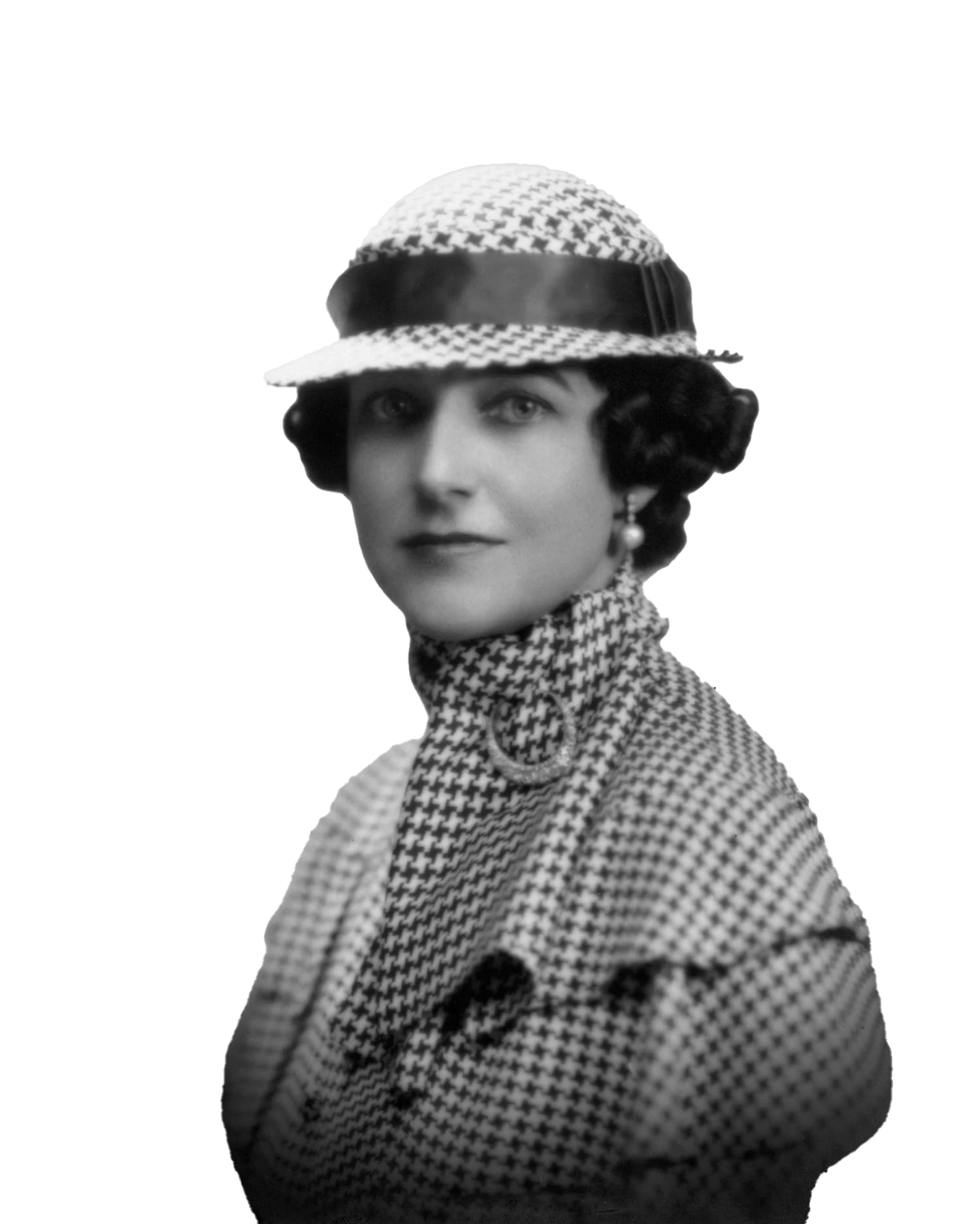Life and achievements
Early life
Dorothy Draper was born Dorothy Tuckerman in 1889 in Tuxedo Park, New York, a very affluent community. Tuckerman's family was one of the first families in America, and Dorothy was born and raised in an upper-class family. Her parents, Paul and Susan Minturn Tuckerman, owned several houses, allowing Dorothy to see beautiful interiors from her early childhood. She was raised by a family that traveled around Europe, giving her the opportunity to learn about architecture and design.
Draper's formal education was mainly received at home by a governess, but she spent two years at the Brearley School in New York. They moved to New York in 1907, and she was presented at her début, giving her more opportunities to appreciate fine arts and designs. In 1912, she married Dr. George Draper, and they began acquiring and renovating houses. This hobby soon became a passion for Dorothy, as she found satisfaction in changing the outlook of any given space through color and pattern. Her work in their homes made her friends notice her, and eventually, she began decorating interiors for other members of high society.
Her early background and connections gave her the confidence to establish her interior design firm in the 1920s. Encouraged by her friends, Draper founded Architectural Clearing House, which marked the start of her remarkable career as a designer. The firm's early successes enabled her to explore new design possibilities, establishing her as an innovator willing to break away from the traditional tastes of the time.
Legacy
It is hard to overstate the importance of Dorothy Draper in interior design. She was one of the first professional interior designers in the United States and helped establish the profession as a serious field. Draper stood out by rejecting the simplicity of early twentieth-century trends, instead embracing bold colors and patterns to create a new language in design. Her style, known as Modern Baroque, was applied to both commercial and residential spaces, making them less gloomy and more joyful.
Draper's impact extended beyond her works; it influenced the entire design process. She transformed hotels, department stores, and private homes into bright, dynamic environments, demonstrating that interior design could significantly affect the mood of the people who occupied those spaces. Draper's belief that "color has a vital effect on our happiness" remains relevant to current designers who value risk-taking and individualistic design.
Draper's work remains influential today, with her redecoration of The Greenbrier Hotel considered one of the best achievements in the field of design. Her legacy continues to shape how designers approach large, upscale projects. Many modern interior designers, such as Kelly Wearstler and Jonathan Adler, have drawn inspiration from Draper's use of color, pattern, and daring style. Draper's design legacy is also carried on through her company, which is still in business under the direction of Carleton Varney, who maintains the flamboyant, theatrical character of her designs.
Milestone moments
Jun 21, 1925
Creation of Architectural Clearing House
Dorothy Draper founded Architectural Clearing House in 1925, which is considered the first interior design firm in the United States.
This was her official entry into the interior design industry, transforming her passion into a unique profession.
Draper began the firm after her friends recognized her talent in decoration and urged her to pursue it professionally.
In 1929, she changed the company's name to Dorothy Draper & Company, solidifying her role as one of the most sought-after interior designers of her generation.
This made Draper a pioneer, turning interior design into a serious occupation.
Mar 20, 1937
Hampshire House Project
In 1937, Draper undertook the challenging task of interior designing Hampshire House, an apartment hotel in New York.
The daring Art Deco interior design, with its black-and-white checkerboard floors and Baroque plasterwork, introduced a new concept of luxury interiors.
She also introduced large mirrors, contrast, and sliding glass doors into the interiors, creating a new trend in luxury design.
Hampshire House was one of the most photographed and discussed design projects of the time, contributing to Draper's growth as a designer.
Apr 17, 1946
Greenbrier Hotel Transformation
Among Draper's most famous projects is the full-scale reconstruction of The Greenbrier Hotel in West Virginia after WWII.
The building had been a military hospital, but Draper transformed it into a vibrant, lively hotel.
Her work at The Greenbrier took 16 months, using over 45,000 yards of fabric and 410,000 gallons of paint.
She designed different themed rooms, including a pink ballroom and a blue room featuring modified busts of U.S. presidents, showcasing her bold design style.
This project established her as one of the most outstanding interior designers of her generation.
Jan 21, 1954
Metropolitan Museum's Dorotheum Cafeteria
In 1954, Draper designed the cafeteria for the Metropolitan Museum of Art, known as the Dorotheum.
The space featured birdcage chandeliers and a skylighted canopy, making the space sensational.
This project demonstrated how even mundane spaces could be transformed into extraordinary environments.
The Dorotheum became the center of attention in New York, showcasing Draper's ability to experiment in both intimate and public spaces.
